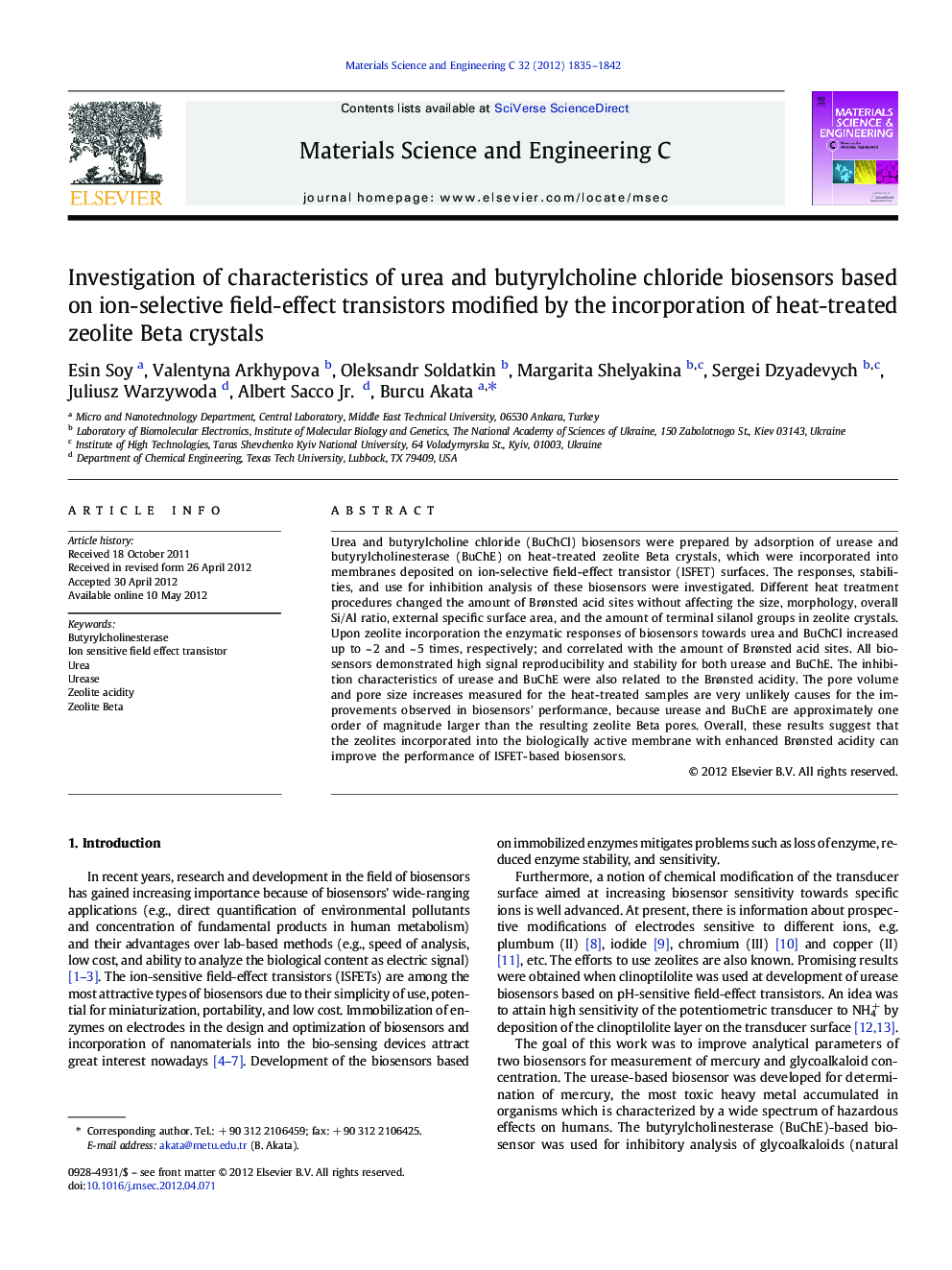| کد مقاله | کد نشریه | سال انتشار | مقاله انگلیسی | نسخه تمام متن |
|---|---|---|---|---|
| 1429331 | 987170 | 2012 | 8 صفحه PDF | دانلود رایگان |

Urea and butyrylcholine chloride (BuChCl) biosensors were prepared by adsorption of urease and butyrylcholinesterase (BuChE) on heat-treated zeolite Beta crystals, which were incorporated into membranes deposited on ion-selective field-effect transistor (ISFET) surfaces. The responses, stabilities, and use for inhibition analysis of these biosensors were investigated. Different heat treatment procedures changed the amount of Brønsted acid sites without affecting the size, morphology, overall Si/Al ratio, external specific surface area, and the amount of terminal silanol groups in zeolite crystals. Upon zeolite incorporation the enzymatic responses of biosensors towards urea and BuChCl increased up to ~ 2 and ~ 5 times, respectively; and correlated with the amount of Brønsted acid sites. All biosensors demonstrated high signal reproducibility and stability for both urease and BuChE. The inhibition characteristics of urease and BuChE were also related to the Brønsted acidity. The pore volume and pore size increases measured for the heat-treated samples are very unlikely causes for the improvements observed in biosensors' performance, because urease and BuChE are approximately one order of magnitude larger than the resulting zeolite Beta pores. Overall, these results suggest that the zeolites incorporated into the biologically active membrane with enhanced Brønsted acidity can improve the performance of ISFET-based biosensors.
Figure optionsDownload as PowerPoint slideHighlights
► A novel ISFET biosensor surface sensitive to changing zeolite acidity was constructed.
► Zeolite crystals were used to modify ISFET electrode surfaces.
► Increasing Brønsted acidity resulted in the increase of enzymatic activity.
► A new approach for varying surface acidity for biosensor applications is presented.
Journal: Materials Science and Engineering: C - Volume 32, Issue 7, 1 October 2012, Pages 1835–1842